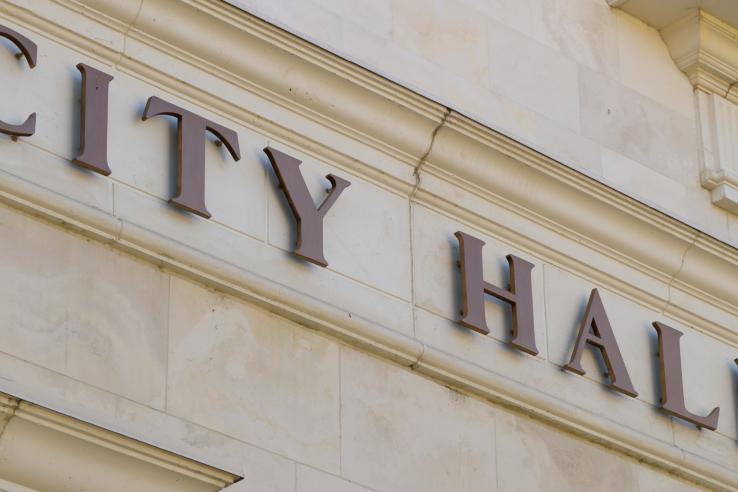
Promoting upward mobility in partnership with state and local governments

This blog post is part one of three (see posts two and three) in a series on how state and local governments in the United States can promote upward mobility in their communities. It is part of J-PAL North America’s work to develop a learning agenda that summarizes the core research priorities from state and local governments.
State and local governments play an essential role in ensuring the health and safety of their residents during the current pandemic and in planning for resilience and recovery beyond the crisis. Through building more rigorous evidence on strategies for reducing poverty and promoting upward mobility, state and local governments can foster new approaches, or increase take-up of existing programs that have demonstrable impact.
J-PAL North America is currently developing a learning agenda that summarizes the core research priorities from state and local governments and identifies areas for future research around policies that promote upward mobility. We use the phrase “upward mobility” broadly, going beyond traditional measures of economic mobility (income, employment, educational attainment, etc.) to also encompass an individual’s connectivity and agency within their community. In this, we draw on the US Partnership on Mobility from Poverty’s definition of mobility.
State and local governments are uniquely positioned to pioneer innovations by testing new policies and programs and scaling up those that prove to be effective, such as say individualized tutoring to promote learning.They understand their residents’ needs and the regulatory, financial, programmatic, and cultural environment in which these policies will be implemented.
Over the past five years, J-PAL North America’s State and Local Innovation Initiative has partnered with government leaders to evaluate programs and policies aimed at reducing poverty. Through this work, we have heard directly from governments about their research priorities, primarily through the 124 research proposals we have collected from state and local governments that identify critical knowledge gaps in addressing pressing policy challenges.
Each proposal to J-PAL North America includes an overview of the policy problem in question and ideas for randomized evaluations to address the problem. Collectively, these proposals reveal potentially promising interventions across a wide range of policy areas and reveal similar needs across localities. These proposals serve as a useful starting point in answering the question: What are the main research priorities for state and local government agencies in developing policies to achieve upward mobility?
We are able to categorize these interventions and research priorities across all the proposals in six broad categories:
- Economic security: This category includes social protection programs such as the Supplemental Nutrition Assistance program (SNAP), interventions aimed at promoting economic self-sufficiency such as mentorship programs, and a variety of measures to combat unemployment and underemployment. A number of proposals, for instance, deal with interventions to increase the take-up of the Earned Income Tax Credit (EITC.)
- Human capital: Proposals in this category are concerned with improving educational achievement through expansion of tutoring, technology for learning, early literacy programs, and access to preschool. Other interventions focus on college access and completion through programs that increase college readiness in high school, provide information about the college application and FAFSA process, and offer comprehensive support to complete courses once enrolled in college.
- Health and wellness: Proposals in this category address physical and mental health in a variety of contexts. Many proposals regarding interventions around the opioid crisis express interest in Medication Assistance Therapy (MAT) alongside other treatments to reduce or block the effects of addiction. Other proposals focus on behavioral health care through integration of mental health services in primary care settings, and improving child health and development from pregnancy to the period after birth.
- Housing, place, and mobility: This category includes measures to tackle homelessness such as permanent supportive housing, homeownership and property asset building through programs that reduce property violations, and housing mobility interventions using Housing Choice Vouchers (HCV). Interventions aimed at maintaining safe environmental standards and expanding access to transit by lowering cost and increasing accessibility are also addressed in this section.
- Race, gender, and inclusion: This category addresses barriers to race and gender equity as they relate to other areas such as the workforce, education, criminal justice, and social safety net systems. Several proposals address the impact of implicit bias in these systems and offer interventions to assess bias, using the Implicit Association Test (IAT) in conjunction with training and teaching tools to reduce bias.
- Safety and justice: This section includes proposals with interventions aimed at reducing crime and violence such as community-based policing. A number of proposals deal with the judicial system, such as text and letter reminders to appear in court, and interventions to reduce recidivism such as prisoner reentry programs.
In categorizing interventions across jurisdictions, we are able to identify common policy priorities and research goals across a diverse set of contexts. Even as policies are crafted to be responsive to the specific needs of residents in a particular context, coordination across localities, agencies, and levels of government is crucial in ensuring that lessons and best practices are not siloed in a single jurisdiction.
This bird’s eye view provides a platform for organizing these responses and constructing a more robust learning agenda for the future. In this learning agenda, due out in December, we will summarize the core research priorities from state and local governments, outline key opportunities for future research, and provide guidance on how to translate the learning agenda into concrete action.
As part of this work, we will underscore how effective interventions must acknowledge that the different policy areas identified above overlap and intersect. The next post in this series will explore how two of these policy areas intersect, by focusing on the role of gender and racial equity in improving health and wellness outcomes.



